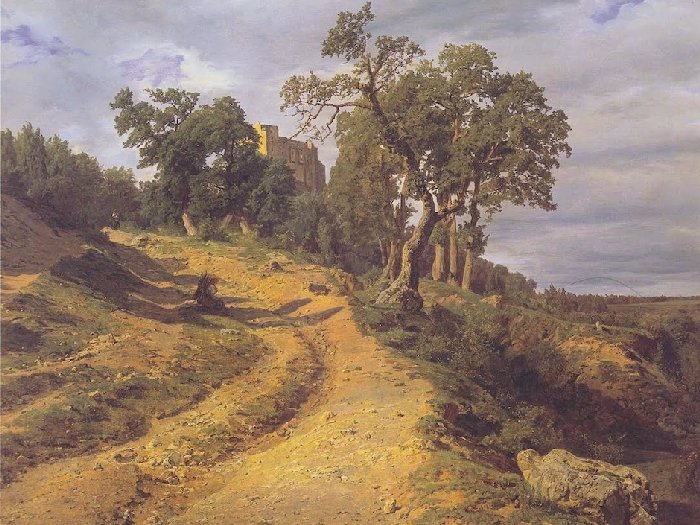 |
| Tony Avelar / Bloomberg files"Taking a long walk was [Steve Jobs's] preferred way to have a serious conversation,” observed Walter Isaacson in his biography of Apple’s co-founder. |
December 12, 2014: Sitting in a meeting or in front of a screen does not get your creative juices flowing, according to research out of Stanford University. If you’re hoping for inspiration to strike, you may want to try walking away.
The study was conducted by Marily Oppezzo and Daniel L. Schwartz and published in the Journal of Experimental Psychology earlier this year. It included an experiment in which participants were asked to undertake Guilford’s Alternative Uses Test — a timed activity used to measure creative thinking — first while sitting and then while walking on a treadmill. Ms. Oppezzo and Mr. Schwartz found that walking increased creativity for 81% of participants, with participants increasing their creative output by an average of 60%.
Because the test evaluates not just the number of ideas but also the number of wholly distinct ideas, the originality of ideas and specificity of ideas, Ms. Oppezzo and Mr. Schwartz were able to determine whether or not the extra ideas generated while walking were junky, far-fetched or irrelevant. They found them to be of a high quality: both innovative and practical.
 This research has tremendous implications for how we approach our work. Executives and organizations are constantly striving to foster creative thinking, usually by implementing cloud-based collaboration tools, having employees attend seminars on innovation or remodeling workspaces to encourage the free exchange of ideas. While all of these approaches can improve performance, taking your meetings for a stroll might yield more bang for buck.
This research has tremendous implications for how we approach our work. Executives and organizations are constantly striving to foster creative thinking, usually by implementing cloud-based collaboration tools, having employees attend seminars on innovation or remodeling workspaces to encourage the free exchange of ideas. While all of these approaches can improve performance, taking your meetings for a stroll might yield more bang for buck.
These findings resonate with my own experience. Before coming across the study, one of my executive coaching clients and I always went for walks while talking through his most pressing issues and challenges. We found that our conversations were enriched by this routine, and he found that the physical movement helped him think. I’ve since shared this approach with several other clients, many of whom have fully adopted or integrated walking into our sessions together.
Based on both the study and my personal experience, here is my suggestion: Before the next brainstorming session or meeting where you will be expected to “think outside the box,” make it a point to go for a walk, preferably outside. You may just find your ability to offer good ideas is significantly improved.
Walking and creativity: Darwin, Nietzsche, Dickens, Beethoven
We can thank Steve Jobs for the business community’s blossoming love affair with the mobile meeting. “Taking a long walk was his preferred way to have a serious conversation,” observed Walter Isaacson in his biography of Apple’s co-founder.
 Facebook’s Mark Zuckerberg adopted the practice, as has Square’s Jack Dorsey, who credits walking as the best way to facilitate deep thinking and conversation.
Facebook’s Mark Zuckerberg adopted the practice, as has Square’s Jack Dorsey, who credits walking as the best way to facilitate deep thinking and conversation.
But as is often the case, new science is old knowledge. Long before the titans Silicon Valley were crawling, some of the most innovative figures in human history extolled the value of putting one foot in front of the other. Below are four famous examples.
1. The Scientist: Charles Darwin
 |
| Wikipedia.orgIn his middle and later years, Charles Darwin went for daily walks on Sandwalk Wood, a gravel path he had installed near his home in south-east England. |
There has never been a simpler solution to a more complex problem than what Charles Darwin put forth in On the Origin of Species (1859). The idea of evolution by natural selection is at once elegant and radical — an entirely original answer to mankind’s oldest question: why are we here? Much of this revolutionary thinking was done afoot.
Darwin first began speculating about the transmutation of species in 1838, while he was still living in London. But the finer points of his theory — a single ancestor, natural selection, random mutation, inhuman timescales — came later, theorized and refined on walks along his “thinking path,” a gravel road called Sandwalk Wood near his home in south-east England.
Darwin would go for three 45-minute walks per day: the first before breakfast, the second before lunch and the third in the early evening. According to his son, Darwin would rarely stray from this routine, regardless of the weather or his health. On Sundays, he chose walking over church.
At the beginning of each day he would stack flint stones at the entrance of the pathway, knocking one over every time he completed a lap. Not only did this help him keep track of how far he’d walked, it helped him measure the difficulty of the issues he was working through. As Sherlock Holmes would later refer to “three-pipe problems,” Darwin referred to “three-” or “four-flint problems.”
2. The Philosopher: Friedrich Nietzsche
 |
| Wikipedia.orgIn the early 1880s, Friedrich Nietzsche made a daily habit of following an old mule path up a mountain near his home in Eze, France. |
Among those who have had the privilege and impulse to put words to paper, German-born philosopher Friedrich Nietzsche stands out as one of history’s most original thinkers. He persuasively challenged many of the West’s most fundamental assumptions, including: universal morality, free will and how we think about cause and effect. He was also an avid walker.
In Twilight of the Idols (1889), Nietzsche wrote: “It is only ideas gained from walking that have any worth.” The quote is probably not intended to be taken entirely literally, and in context reads more than a little arch (he was refuting Gustave Flaubert at the time). But the physical activity of walking was nonetheless central to Nietzsche’s creative process.
Though not a healthy man, Nietzsche walked when he was able. In the early 1880s he lived in Eze, France, and made a daily habit of scaling a steep 1,400-foot mountain to reach a medieval village perched above his home. During this period, he reported being able to “walk in the mountains for seven of eight hours without a trace of weariness,” during which time he composed philosophy.
True to his philosophical outlook, he considered his penchant for walking to be the effect, not the cause, of his creativity, writing: “The suppleness of my muscles has always been greatest when my creative energies were flowing most abundantly.”
3. The Writer: Charles Dickens
 |
| The British LibraryWhen he couldn't sleep, Charles Dickens would often go for long walks through the streets of London. |
As with any author of prodigious output and marvelous talent, it can be difficult to imagine writing as something that did not come easily to Charles Dickens. But like many writers, he found the process emotionally draining and frequently painful. So he went for walks.
In a letter from Boulogne, France, where he spent a few of his summers in the mid-1850s, Dickens wrote: “If I couldn’t walk fast and far, I should just explode and perish.” Walking was for Dickens a means of escape, a way to leave behind — if only temporarily — a life he felt stunted his creativity.
Dickens was known to walk at least a dozen miles per day, often more and often at night when he couldn’t sleep. In The Uncommercial Traveller (1859), a foray into the semi-autobiographical, Dickens describes encountering the shadowy underclass of London during his nighttime strolls — the sorts of figures he made immortal in his vivid, dreamlike, class-conscious fiction.
Friends reportedly worried that Dickens’s walking bordered on pathology. Four hours on foot per day is not, after all, normal. But Dickens was not normal, and his biographers tend to side with him, citing his walking as a mood regulator, restorative and source of inspiration.
4. The Composer: Ludwig van Beethoven
 |
| Wikiart.orgDuring his afternoon walks Ludwig van Beethoven would often visit Mödling, a village on the edge of the Viennese woods. |
If ever there were a transcendent genius, it would be Ludwig van Beethoven. He debuted his first symphony at 20, began going deaf at 40 and composed his final three symphonies in part by feeling the vibrations of his legless pianos through the floor. But his works were produced through regimented routine, relieved and enlivened by regular walking.
Beethoven reportedly liked to interrupt his composition writing with quick jaunts outside. After lunch, when he considered his workday over, he took a longer, often solitary walk. Armed with a pencil and notepad, he would stroll the Viennese woods for hours, finding inspiration for melodies and movements while on foot, then setting down to record them.
Beethoven composed his sixth symphony simultaneously with his fifth. While the fifth reflects poet Johann Wolfgang van Goethe’s description of Beethoven as “an untamed personality,” the sixth, which Beethoven called his “pastoral symphony,” contains woodwind imitations of the songs he heard sung by various species of birds during his walks.
When Goethe met Beethoven, incidentally, Beethoven took him along for a walk. While the particulars of that meeting have become the stuff of legend, a walking Beethoven has become one of our most enduring images of the composer as mere mortal — perhaps because it offers a rare glimpse into how Beethoven nurtured his creativity.
“Walking and creativity” complied by Cody Gault
